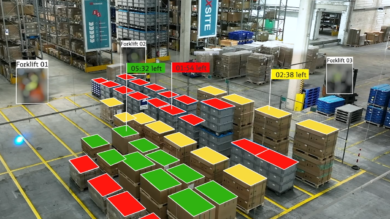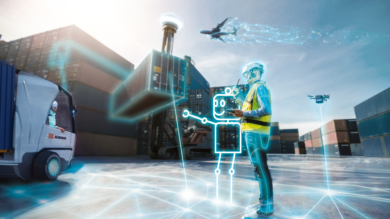In comparison to other modes of transport, customers pay premium prices to move their freight via air. If the wheels stay in motion throughout the entire supply chain, all stakeholders are content. But if one hiccup occurs, it becomes everyone’s problem and the consequences of delay or decreased visibility can lead to extended delays and a very unhappy customer.
What benefits does real time visibility bring to the supply chain?
Having access to real time visibility on freight shipments brings many benefits, not only to customers, but also the freight forwarder.
Telemetric data and deviation alerts
Real time visibility mobilizes freight forwarders to track numerous telemetric factors. This brings numerous benefits across the vertical markets, such as:
• Healthcare: Temperature monitoring is essential for Healthcare customers. It establishes patient safety and protects the integrity of the product end to end. It enables operations to intervene whenever there is a deviation to the process agreed upon with the customer, whether it is a delay, a change of routing, a temperature excursion, or a security breach.
• Semiconductor: In the Semicon industry, large, fragile, and expensive production machinery is often transported via Air Freight. Real time visibility is the solution to ensure constant tracking, monitoring, and recording of all relevant transport data, such as tilt, shock, temperature, or humidity.
• Automotive: Additional data for shock, motion, vibration, or light sensors can bring many insights and benefits to the customers for their pre/on carriage legs within the supply chain. Real time visibility is a perfect fit for prototype areas and high-cost products where special requirements are requested.

Risk management and performance improvement
Real time visibility provides data, but the real question is how can that data be utilized to help mitigate risks and improve operational excellence. For example, if a telemetric threshold is crossed for a Healthcare shipment, the following can be checked:
• Where did it happen?
• How did it happen?
• Who was responsible for the shipment at the time?
• And most importantly… going forward how can the risk be eliminated?
For internal stakeholders’ real time data can be organized to help identify performance issues with suppliers, ensuring that logistic providers are well equipped to offer their customers high-quality service throughout the supply chain.

Geofencing and calculated ETA
Combining tracking devices with the Internet of Things creates the possibility of geofencing. Internet of Things, also commonly known as IoT, a system of interrelated, internet-connected objects that can collect and transfer data over a wireless network without human intervention.
Geofencing is the use of GPS or RFID technology to create a virtual geographic boundary, enabling software to trigger a configured alert when a mobile device enters or leaves the set geographic boundary. For example, the logistics service provider DB Schenker has used geofencing to closely monitor high value goods, when security issues occurred at a ground handling agent in the United States. Geofencing was utilized to help create an alert to DB Schenker employees to notify them that the truck was leaving the ground handling agent’s premises. This enabled staff at DB Schenker to be notified that the vehicle had left the ground handling agent so the freight could be closely monitored through the IoT platform. In the summer of 2020, DB Schenker launched their real time visibility portfolio – AirTrack, with which the logistics service provider has created a portfolio of different visibility solutions to cover all business cases. Each of these solutions bring the customer increased real time visibility for their Air Freight shipments and the portfolio is constantly being enhanced to keep up with the latest visibility solutions.
Geofencing not only helps customers monitor high value goods with active alerts, but also contributes towards calculating the estimated time of arrival (ETA). In these times, all consumers expect a calculated ETA on services provided throughout the supply chain. As well as ETA calculations, it also provides freight forwarders with visibility to help them see where internal operational efficiencies can be improved.
Conclusion
Over the last five years the demand for real time visibility has rapidly increased. Customers expect full supply chain visibility for their shipments and that logistic providers to be innovative when it comes to enhancing the customer experience.
Real time visibility offers the fastest availability of information, helping freight forwarders to make quicker decisions and giving them the ability to better react to situations that may occur on route. Visibility solutions are constantly evolving; therefore, freight forwarders tend to have dedicated teams to ensure they can offer their customers the most up to date visibility products. Freight forwarders have come to understand that real time visibility is a hot topic for Air Freight logistics, and being able to offer their customers the most up to date visibility solutions will not only help retain customers but also attract new ones.
Published: June 2021










